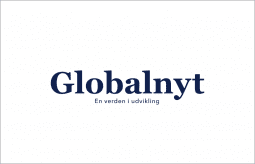WHO’s Sydøstasien-region

- Bangladesh
- Bhutan
- Nordkorea
- Indien
- Indonesien
- Maldiverne
- Burma
- Nepal
- Sri Lanka
- Thailand
- Øst-timor
GENEVA, 12 January, 2016 (UN News): The United Nations health agency today announced that the South-East Asia Region has completed five years without any case of wild poliovirus, a highly infectious disease that invades the nervous system and for which there is still no cure.
“This is a remarkable achievement in view of the continued threat of poliovirus importation from the remaining polio-endemic countries,” said World Health Organization (WHO) Regional Director Dr. Poonam Khetrapal Singh, in a statement.
Seneste tilfælde var i Indien i 2011
“Countries in the region have been making commendable efforts, stepping up vigilance against polio and continuing to protect children against the crippling virus,” he added, noting that the last case of wild poliovirus reported by WHO in the South-East Asia Region was in West Bengal, India, in 2011.
The UN agency is underlining that completing half a decade without any case of wild poliovirus is “yet another achievement” and a reminder that efforts need to continue until the disease is eradicated globally.
“We need to ensure that our efforts and investment over the years to eradicate polio do not go to waste,” warned Dr. Singh. “Globally, polio transmission is at its lowest ever levels. However, the risk of importation of the poliovirus into all polio-free areas persists.”
Målet er at polio skal være udryddet i 2018
As part of the Polio End Game strategy, a long-term plan that addresses what is needed to deliver a polio-free world by 2018, countries in the region are accelerating the introduction of one dose of injectable inactivated polio vaccine (IPV) in childhood immunization schedules, along with plans for a globally synchronized, phased and sequential withdrawal of oral polio vaccines from the programme.
WHO says these strategies are aimed at addressing all polio – including the rare cases of vaccine derived polio.
“Our efforts to stop polio and now to keep the region polio-free, have been possible due to numerous innovative strategies that helped strengthen immunization and disease surveillance, and promote community ownership,” Dr. Singh explained.
“While these lessons learnt are now being adopted by the remaining endemic areas, countries in the region need to replicate these strategies and optimally use the polio programme resources for other public health goals, particularly in the areas of immunization, surveillance and emergency response.”
He added that a polio-free world “is in sight,” and that the international community must continue to make efforts to rid the world of the “crippling disease.”
WHO’s South-East Asia Region comprises Bangladesh, Bhutan, Democratic People’s Republic of Korea, India, Indonesia, Maldives, Myanmar, Nepal, Sri Lanka, Thailand and Timor-Leste.















